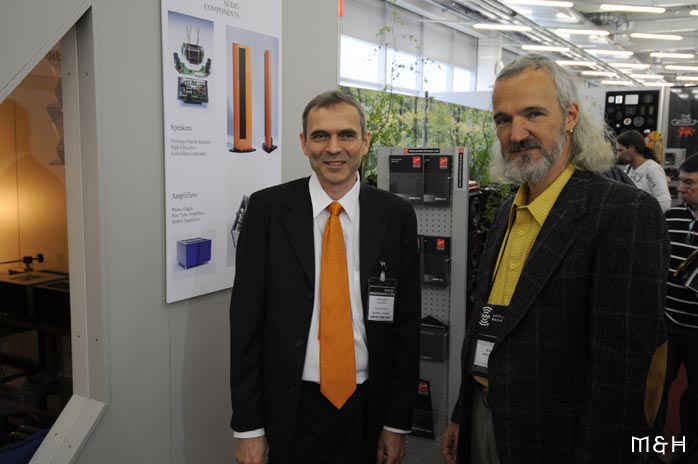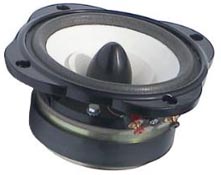|
This review page is supported in part by the sponsors whose ad banners are displayed below
|
|||||||||||||||
 |
|||||||||||||||
 |
|||||||||||||||
 |
|||||||||||||||
|
Reviewer: Srajan Ebaen Financial Interests: click here Source: APL HiFi NWO 3.0-GO; Ancient Audio Lektor Prime; Raysonic Audio CD-168; Yamamoto YDA-01 Preamp/Integrated: ModWright LS-36.5 with PS 36.5 Amp: 2 x Audiosector Patek SE; 2 x First Watt F4, 1 x F5; Yamamoto A-09S Speakers: Acoustic System Tango R; Zu Audio Essence [on review] Cables: Acoustic System Liveline interconnects and speaker cables; Crystal Cable Ultra loom; Crystal Cable Reference power cords Stands: 2 x Ikea Molger with Ikea butcher block platforms and Acoustic System footers Powerline conditioning: 2 x Walker Audio Velocitor S Sundry accessories: Furutech RD-2 CD demagnetizer; Nanotech Nespa Pro; full-house installation of Acoustic System resonators, noise filters and phase inverters Room size: Sound platform 3 x 4.5m with 2-story slanted ceiling; four steps below continues into 8m long open kitchen, dining room and office which widen to 5.2m with 2.8m ceiling; sound platform space is open to 2nd story landing and 3rd-floor studio; concrete floor, concrete and brick walls, converted barn with no parallel walls nor perfect right angles; short-wall setup with speaker backs facing the 8-meter expanse Review Component Retail: €12,000/pr passive, €15,000/pair active, high-gloss lacquer adds €2,310 |
|||||||||||||||
|
|||||||||||||||
 |
|||||||||||||||
After a cursory first glance at Acoustic Plan's lineup, one will, besides blue, have noted hybrid valve/transistor circuits; external power supplies mandatory for multi-pin sockets that are fitted in lieu of power IECs; and a nomenclature that suggests Schwabian proprietor Claus Jäckle enjoys an affinity for Indian music and thus must fancy tone and timing since the Carnatic and Hindustani idioms are monophonic. A closer second glance will identify what look like output transformers on an already unusual looking top-loading CD player that eschews a conventional display and sports just two controls. |
|||||||||||||||
 |
 |
||||||||||||||
| You'll also appreciate that cables excepted, Acoustic Plan is a full source-to-speakers provider who caters to analog and digital. And while there are four loudspeaker models to suit different room requirements, of everything else there's only one. That suggests being the best the | |||||||||||||||
| designer could create for its particular category. Anything more or other would simply be superfluous. What we take away from the photographs then are distinctive styling; an exclusionary preference for valves coupled to transistor drive; and, presumably, a designer who takes his time to investigate each component category before authoring one singular statement on the subject. If we further know that his model names sarod, sitar, santor and veena denote classical Indian instruments; that vadi is the dominant note of a raga and tala its rhythmic meter; and that avarta is a whirling nexus or portal like a chakra - then we'll additionally assume that Jäckle's nature is foremost artistic to focus on the experience over laboratory graphs. That's why pictures are worth a thousand words. They offer plenty of subtext. |
|||||||||||||||
|
| |||||||||||||||
Behind every art of course hides some form of science. To delve deeper here, we must consult specifications before we can appreciate just how outside the mainstream Acoustic Plan has positioned itself. The €8.800 Vadi CD player for example runs three power transformers with nine independent supplies in a separate enclosure; discrete regulator circuits including shunts instead of ICs; no up- or oversampling on its R-2-R multi-bit Analog Devices DACs; passive I/V conversion instead of operational amplifiers; double C-core output transformers of Claus Jäckle's own design; and a tube-regulated high-voltage power supply for the E88CC output stage including an EZ81 rectifier and EF86 and EL84 stabilizers. The 2-digit track display is his own dot matrix solution and the metal remote with engraved symbols limits itself to six controls. "The Vadi has been designed with the idea that the preservation of tonal and timing accuracy is of the utmost importance to realistically reproduce the musical experience." The 9-valve Sarod preamp (from €6.600) with optional phono stage runs a Lundahl input transformer for phono; a 75C1, EZ81, EF80 and EL86 tube-rectified, -regulated and -stabilized power supply; a single triode gain stage and a 24-position ultra-quality stepped attenuator. Jäckle proudly proclaims that his preamp is free of all semiconductors. The €6,600 Sitar integrated too is available with optional phono and remote and outputs all of 40 watts. The €6,600 Santor stereo amp makes 50/100wpc into 8/4 ohms or doubles strapped to mono. Both amplifiers combine a triode gain stage with a Mosfet output stage without feedback or differential amplification. |
|||||||||||||||
 |
|||||||||||||||
Though appearing at first more conventional, the Tala and Raga speakers both are woofer-augmented widebanders running either one or two paralleled aluminum cones over 7 octaves before, "ten times lower than conventional", they hand over to their bass units. With stated F3s of 45 and 40Hz respectively, the sensitivity ratings are a mere 85/90dB. Jäckle's triode, NOS (non up/oversampling), zero NFB (negative feedback) low-power leanings with their concomitant expectations here encounter their second unique wrinkle. The Mosfet power outputs would have been the first. |
|||||||||||||||
 |
|||||||||||||||
|
Herr Jäckle and yours truly at Munich HighEnd 2008 as seen through the camera of Marja & Henk Pursuing paths less travelled continues with today's Veena review subject. That's the bigger of Jäckle's two open-baffle dipoles. It crosses a 13cm/5" Lowther C45 at 150Hz to four 25cm/10" woofers for an 88/98dB sensitivity depending on whether passive or active bass is chosen. In the latter case, a 5-watt main amplifier of the 300B persuasion will be sufficient. In the former, 50 watts are recommended. With its own amplifier installed ("basically it consists of a transformer with a following Mosfet impedance converter"), the Veena offers +/-3dB LF adjustments via knob selection between transformer secondaries (a -6dB option is offered for smaller rooms). Dimensions are 1636 x 460 x 160mm HxWxD (64.4 x 18 x 6.3 inches) and weight is 40kg/88.2lb. Standard finish options for the open-backed 'enclosure' include Maple, Cheery and Walnut. Deeper purses can request "all veneers and lacquers". The plinth remains black to integrate the grill. |
|||||||||||||||
 |
Compared to its more prestigious EX or DX brethren, the C45 with its 17.500 gauss flux density and +/-1mm voice coil travel on its paper bi-cone is perhaps the lowliest of Lowthers. Or in the immortal words of Tadpole, assistant to the lovable scoundrel Lovejoy of the eponymous BBC television serious, "the closest that's ever been to Lafitte (referring there to some wine for antiques trade they've been scammed on) is strained through a sock". Once again, Herr Claus caters not to convention or expectation but follows the light of his own ears. Of course he's not the first to jump ship on the Lowther-über-alles crowd. Tommy Hørning combines his with tweeters and massively paralleled woofers to get the good while tossing the bad. The bad refers to those portions of the audible bandwidth where the fullranger loses its range. Jacob George from Southern India adds two self-amplified isobarically loaded 6-inchers to his Saadhana's DX55. He runs a variable low-pass from 75 to 200Hz but no filter on the Lowther to keep the latter pure. There are probably more Lowtharios who similarly go beyond the basic recipe of a single Lowther. Still, within the tiny mosque on the lone prairie that is the Lowther church, those who dare defile the fullranger credo with add-on woofers aren't many. Getting bass that rises and settles as fast as a Lowther which barely moves; and woofer efficiency to match the widebander - well, those are just some of the challenges which face those of impure ambitions. |
||||||||||||||
 |
|||||||||||||||
With the Veena, the active version is the obvious ticket. Why pad down the Lowther to 88dB to match the woofers? In the active version, the necessary amplitude lift on the vertical quad array gets handled by Acoustic Plan's amp. Now the open-backed C45 is free to strut its 98dB reflexes and you're free to dig into your inventory of 2A3s, 300Bs and other direct-heated triodes. Dipole radiation obviously involves the room more than the ubiquitous monopoles. You have active rear radiation that's not captured by an enclosure. This has consequences beyond reflecting directly off your front wall. First, half the driver's radiated energy isn't wasted through absorption which drives up effective efficiency by a few decibels. Second, the stroke is now equalized because the driver encounters the same radiation resistance front and back. In an enclosed scenario, the drivers sees free air on one side and a limited air volume on the other (which, if sealed, significantly alters free-air conditions). Whether it's natural to have dissimilar outgoing and ingoing phases on a mechanical transducer that's meant to accurately translate electrical signal might be a relevant question for the engineers. To us lay folk, the open-baffle scheme in this context means freely breathing drivers that aren't hobbled on their rearward stroke and which release their full (undamped) energy into the room like musical instruments do. |
|||||||||||||||
 |
|||||||||||||||
|
| |||||||||||||||
 |
|||||||||||||||
 |
|||||||||||||||
 |
|||||||||||||||